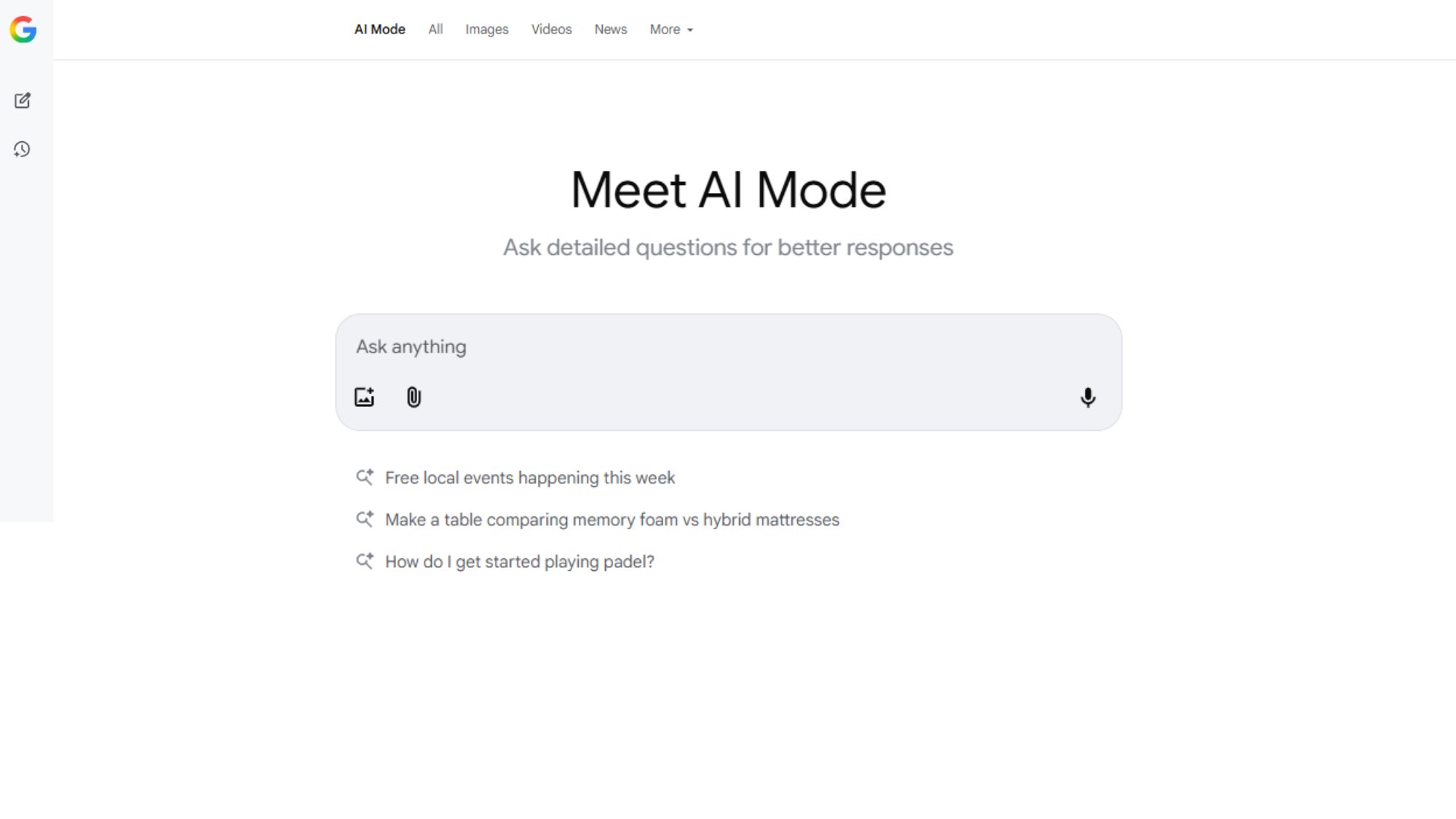The Future of Search Is Conversational
Search as we know it is changing. For years, digital marketers focused on one goal: ranking on Google’s first page.
But as we step into 2025, the way people search is evolving faster than ever. Instead of typing short keywords like “best marketing agency,” users now ask complete questions such as “What’s the best digital agency for AI-driven campaigns?”
This shift is powered by conversational AI. People expect answers in seconds, not lists of links.
They interact with tools like ChatGPT and Gemini the same way they would talk to a human assistant. That means your brand’s visibility no longer depends only on SEO. It now depends on whether AI engines can find, understand, and quote your content.
In this blog, we’ll explore what’s happening in digital marketing, how SEO has evolved into AEO and GEO, and what practical steps you can take to keep your brand visible and relevant.
What’s Changing in Digital Marketing Right Now
1. AI-Driven Search Takes the Lead
AI is reshaping how people discover information. Tools like ChatGPT, Google’s Gemini, and Microsoft Copilot are becoming digital gatekeepers. Instead of opening multiple tabs, users now rely on AI to summarize results instantly.
For marketers, this means the first interaction with your brand might happen inside a chatbot conversation, not through a website visit. Therefore, your content needs to be AI-readable, structured clearly, and optimized for direct answers.
2. The Evolution: From SEO to AEO to GEO
Let’s break it down clearly:
- SEO (Search Engine Optimization) helps you rank on Google and Bing.
- AEO (Answer Engine Optimization) helps your content appear in AI or voice-based answers, such as Alexa or ChatGPT responses.
- GEO (Generative Engine Optimization) focuses on training AI engines to pull accurate, brand-relevant data from your content when generating text, visuals, or summaries.
In simple terms, GEO is the new SEO for the age of conversational AI. Optimizing for it ensures your brand remains discoverable even when users don’t click search results at all.
3. Social Media, Search, and Experience Are Merging
In 2025, search and social media work hand in hand. People now use TikTok, Instagram, and YouTube to “search” for recommendations before turning to Google.
That’s why video SEO and social listening are key to understanding how people find your brand.
Creating consistent brand experiences across your website, blog, and social platforms helps your business stay memorable.
For example, if you publish a blog about AI marketing, turn it into a 30-second Reel, a carousel post, or a Pinterest pin. Each piece works together to drive discovery.
4. User Expectations Are Higher Than Ever
Today’s audience wants content that feels natural and genuinely useful. They expect quick, conversational answers and meaningful insights.
Generic blog posts don’t cut it anymore. Your content must feel human-driven yet AI-optimized: clear, structured, and emotionally engaging.
Why This Shift Matters for Your Business

Ignoring these trends can cost you visibility and relevance. As generative engines like ChatGPT continue to evolve, they’ll prioritize accurate, structured, and authoritative content.
If your site doesn’t fit that model, your brand could disappear from the results people actually see.
On the other hand, adapting to AEO and GEO can help your business:
- Show up in AI answers even without traditional Google rankings.
- Earn credibility as a trusted source cited by AI engines.
- Convert faster by being part of conversations that guide purchases.
- Strengthen your brand voice across new, conversational platforms.
In short, adapting isn’t optional, it’s the key to staying visible and competitive.
Five Practical Steps to Optimize for Conversational AI
1. Start with Real Questions, Not Keywords
Traditional keyword research is important, but you now need to think in natural language.
Instead of focusing only on “digital marketing agency,” identify real questions people are asking such as:
- “How can small businesses use AI for marketing?”
- “What’s the difference between SEO and AEO?”
- “Which digital trends are shaping 2025?”
Then, create content that directly answers those questions in the first 100 words of your blog post or page. AI tools love clarity and structured responses.
2. Write for Humans and Machines
Your writing should sound natural and helpful while staying structured for machine readability.
Use H2 and H3 headings, short paragraphs, and lists. Add a “Question and Answer” section to boost your chances of being cited by AI engines.
For example:
Question: What is AEO in digital marketing?
Answer: AEO stands for Answer Engine Optimization. It helps content appear as a direct response inside AI or voice-search results.
By blending clarity with conversational flow, you meet both human and algorithmic needs.
3. Use Multi-Platform Storytelling
Your blog doesn’t live in isolation. Repurpose it into short-form videos, infographics, carousels, and newsletter snippets.
This not only improves engagement but also increases your digital footprint across multiple channels.
For instance, after publishing a blog like this one, create:
- A short video summarizing the 5 steps
- A LinkedIn post highlighting one key insight
- An Instagram carousel showing SEO → AEO → GEO visually
These micro-contents act as doorways leading audiences back to your site.
4. Build Credibility and Use Data
AI tools value authority. Include reliable data, quotes, and case studies to position your brand as a credible source.
Update your content regularly so it stays relevant. You can also link to trusted sources and showcase your experience through testimonials or industry partnerships.
For example, linking to a recent study from HubSpot or Google adds weight to your insights and helps AI systems recognize your authority.
5. Measure Performance Beyond Clicks
In the conversational era, your analytics need to evolve. Don’t just track organic visits. Instead, monitor:
- How often your brand is mentioned in AI summaries or chatbots
- Which posts generate the most engagement across platforms
- How long readers stay on your page
- Whether your content appears in featured snippets or AI-generated citations
These metrics give you a clearer picture of visibility in the new search landscape.
Looking Ahead: What’s Next in 2025 and Beyond

As we move further into 2025, expect conversational AI to become even more integrated into daily life.
People will search less and talk more, using voice assistants, wearable devices, and even AR/VR experiences to find information.
At the same time, social search is growing rapidly. Younger audiences prefer searching inside TikTok or YouTube before opening Google. For marketers, this means it’s crucial to create content that’s searchable everywhere, not just on your website.
Moreover, privacy regulations and the shift toward first-party data will redefine how brands connect with audiences. Building direct relationships through newsletters, communities, and interactive content will be essential.
The future of digital marketing isn’t about fighting algorithms. It’s about understanding how people and AI interact and creating content that thrives in both worlds.
Be Where Conversations Happen
The age of conversational AI isn’t the end of SEO, it’s its evolution. The principles of good content remain the same: relevance, clarity, and authenticity. What’s changing is where and how people find it.
By optimizing for AEO and GEO, you make your content easier to discover, easier to understand, and easier to trust. You don’t just show up in search results; you show up in conversations, and that’s where modern decisions are made.
If you’re ready to make your brand part of this next chapter in digital marketing, we’re here to help.
Let’s Elevate Your Digital Presence
At Expresso Company, we specialize in helping brands show up, stand out, and stay relevant in the evolving world of digital marketing.
Whether you need a complete website redesign, SEO strategy, or conversational content plan, our team can guide you through every step.
Reach out today and let’s make sure your brand gets found in the era of AI.
FAQs: Conversational AI & Modern SEO
What is Answer Engine Optimization (AEO)?
AEO (Answer Engine Optimization) is the process of optimizing your content so it can be easily understood and quoted by AI tools such as ChatGPT, Gemini, or voice assistants. The goal is to help your content appear as a direct answer when users ask questions conversationally. Unlike traditional SEO, which focuses on ranking for keywords, AEO prioritizes clarity, structure, and context. To succeed, focus on writing content that directly answers real user questions, using headings, bullet points, and simple language.
How do I optimize my website for conversational or voice search?
To optimize for conversational and voice search, focus on natural, question-based language. Use headings that include “how,” “what,” or “why,” and provide concise answers near the top of your content. Structure each page with clear paragraphs, lists, and schema markup (like FAQ or HowTo) so AI and voice assistants can easily interpret it. Also, ensure your website loads quickly and is mobile-friendly, since most voice searches happen on mobile devices.
What is Generative Engine Optimization (GEO)?
Generative Engine Optimization (GEO) is an emerging strategy that focuses on making your content discoverable by generative AI systems like ChatGPT or Perplexity. While SEO helps rank your site on search engines, GEO ensures that AI tools can accurately cite or summarize your content in their responses. To optimize for GEO, focus on factual accuracy, clear formatting, and authoritative sources. Using well-structured content and consistent brand information helps AI recognize and trust your site.
How can I measure success in AI-based search?
Success in AI-based search goes beyond keyword rankings. Key indicators include appearing in Google’s “People Also Ask” sections, featured snippets, or being cited in AI-generated summaries. Tracking engagement metrics like time on page, bounce rate, and conversions also helps measure effectiveness. As conversational search grows, monitor how often your content is referenced by AI tools or appears in direct-answer formats. These metrics show that your content is optimized for both humans and machines.
How often should I update my FAQ or AI-optimized content?
You should review and update AI-optimized content every 3 to 6 months. Search patterns and AI algorithms evolve quickly, and staying current ensures your content remains relevant. Refresh outdated statistics, add new insights, and refine your answers based on trending user questions. Consistent updates improve your chances of appearing in AI-generated results and maintain your credibility as a trusted source.






